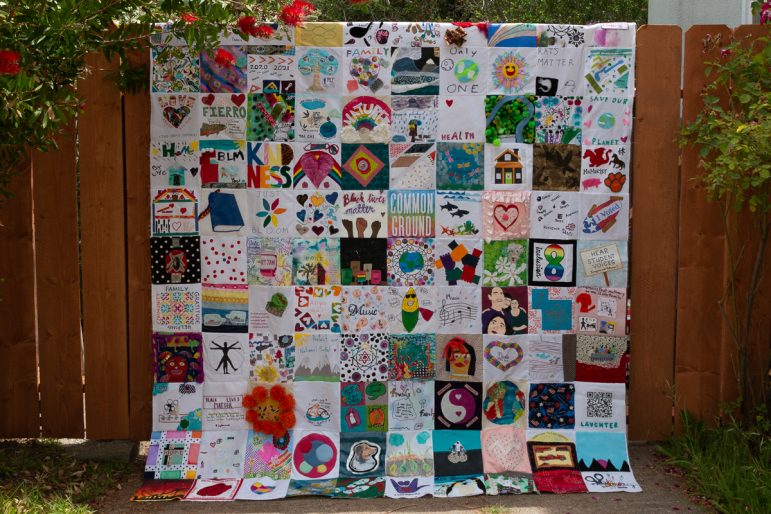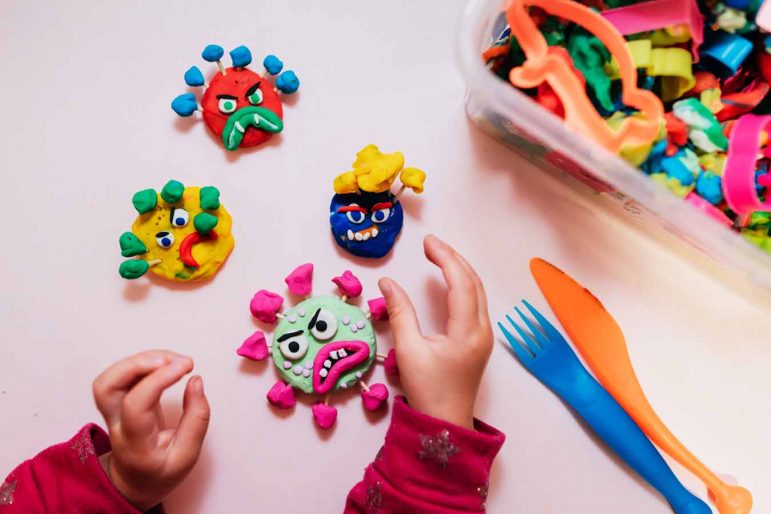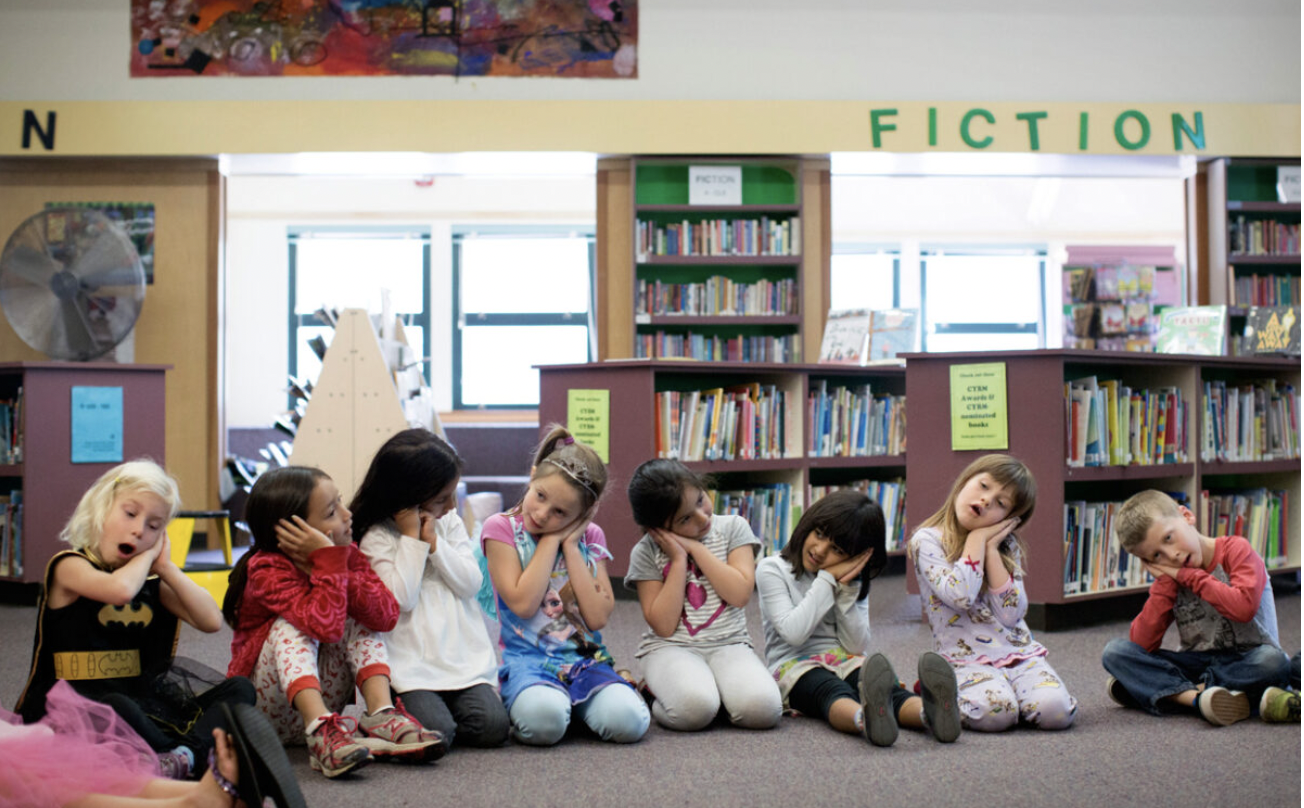California has long been famous for its creativity, the engine driving everything from the entertainment industry to the tech sector. But decades of budget cuts and a laser focus on core subjects have pushed the state’s public schools to cut arts education to the bone over the years.
Now, two years of trauma during a pandemic that’s stolen more than a million lives and the fresh horrors of a spate of mass shootings, experts say, underscore the pressing need for more paths to social-emotional learning in schools. That’s a key reason former Los Angeles Unified Superintendent Austin Beutner, supported by many educators and artists, is championing a mandate to restore arts and music education to the public schools, as a way to help children grapple with their feelings about growing up in a time of tragedy.
“Talk to any social worker, the first thing they do with a child in trauma is ask them to draw a picture,” said Beutner, who stepped down after three years at LAUSD. “The arts are a key part of the therapeutic process.”
Once a classical value within a comprehensive education, the arts have long been scrubbed in favor of math and science. But the pandemic has shined a bright light on the need to help children cope with trauma and find ways to heal, experts say.
“This could be the moment, a crisis can become an opportunity,” said Beutner, who shepherded the nation’s second-largest school district through the worst of the pandemic. “The state has a windfall. Why not use some of it to restore some of what we’ve lost?”
That’s why Beutner is pushing hard to bring the arts back, putting an initiative on the November ballot that would require the state to spend between $800 million and $1 billion extra each year out of its overflowing general fund for arts and music education. That’s almost four times more than the total budget of the National Endowment for the Arts. His campaign has been successful thus far, gaining a million signatures in less than 90 days, more than necessary to be on the ballot.
Arts education also got a boost when Gov. Gavin Newsom earmarked $1 billion toward afterschool enrichment programs as part of his Expanded Learning Opportunities Program for the coming school year, pending budget negotiations with the Legislature. “We believe in STEAM, not STEM,” said Newsom. “That’s the ‘A’ that’s missing, arts and music.”
Can the arts help kids recover from deep pandemic trauma? Can creativity and self-expression boost social-emotional learning at a time when mental health is at risk? Beutner, for one, sees arts education as a path out of the alienation of the last few years.
“If we can get the arts back into the classroom it can make a huge difference,” said Beutner, who had a personal epiphany when he discovered the cello in the fifth grade. “It’s a way out of pandemic isolation, a way to connect with other people and gain a sense of belonging.”

As the youth mental health crisis deepens into a national emergency, with the Texas school shooting dominating the headlines, child suicide on the rise, and the pandemic still upending much of society, there is a renewed focus on finding ways to boost student well-being amid the chaos.
Two years of trauma have scarred us all. The pandemic has certainly been the most traumatic collective event of our lifetime, experts say, giving rise to a mental health crisis in which children may be among the most vulnerable. The excruciating uncertainties of life today have left many children feeling raw and anxious. Very young children may not even remember a time before the pandemic.
“Now more than ever, it is imperative that we find creative ways to help children with healing,” said Nora Zamora, executive director of social and emotional learning for the Alameda County Office of Education. “Trauma and healing-centered approaches that address the needs of students, as well as youth-serving staff, are not only innovative, they’re critical to creating the conditions needed to address pandemic trauma.”
“You have to meet kids where they are,” said Beutner, who sees the arts as a powerful instructional tool.
“It’s an existential challenge. The arts help engage children. Whatever you are teaching, you have to make it interesting first. If you lean into the arts or music or animation, you can weave it through the numeracy and the literacy.”
If you want to educate the whole child, you have to tap into their social-emotional core and let them express themselves, experts say. Giving young people a chance to let it all out can help lower stress and raise self-esteem, paving the way for learning.
The arts can be a safe haven for children to face big emotions, to channel fears and frustrations into acts of creativity. Under this initiative, school leaders would choose what to spend the money on, deciding which artistic pursuit, from dance and drawing to animation, best suits the needs of their students.
“So many of our kids have been struggling with mental health issues during this pandemic,” said singer Katy Perry, one of the celebrities helping campaign for the initiative. “Arts and music education plays a critical role in supporting the mental health of young people. Now more than ever, it’s important we give all kids access to this critical resource.”
A sense of connection to the past can help ground young people in times of turbulence, experts say, helping them feel more resilient even as the social contract feels increasingly strained. The long, hard grind of chronic uncertainty has been linked to a rise in anxiety and depression, research suggests, and post-traumatic stress disorder.
“The arts can connect students to a world – past, present and future – full of history, innovation, expression, representation, beauty, power and inspiration,” said Chad Jones, executive director at the San Francisco Arts Education Project. “All of these things have always been important for educating the whole person, but through the pandemic, it seems that much more important to find ways to truly engage with students and make them feel connected to something outside themselves.”

Musician/producer Quincy Jones, also among the broad coalition of artists who back the proposal, has said that music saved his life. That’s not hyperbole, experts suggest. Art can be an oasis for children who are struggling with myriad emotional upsets.
“There are countless examples of troubled souls finding a way through their tragedy or trauma by turning their energies into something creative,” said Rush Rehm, professor of classics at Stanford.
“Working and thinking creatively provides more than an outlet. It allows one to play, to drop out of the normal or escape from the traumatic.”
Another proponent, actress Issa Rae, star of HBO’s “Insecure,” views arts education as a way to champion equity in an increasingly unequal society. Schools serving low-income students, especially students of color, are far less likely to have robust arts programs, experts say, than more affluent schools. Only 1 in 5 public schools have a dedicated arts teacher, according to Beutner.
Rae sees this initiative as a way to reach children who lack the exposure to arts and culture that families of means often take for granted. Enrichment shouldn’t be limited to only those who can afford it, some say, particularly at a time when the gap between the haves and the have-nots has never been wider. Finding their voice can be a game-changer for children who feel unheard.
“This ballot measure will help define the promise of the next generation of storytellers by ensuring all California students get the high-quality arts and music education they deserve,” Rae said. “It will especially benefit students from communities of color, who often experience a lack of access and equity in access to arts and music education.”
The effort to restore arts and music education to a more prominent place in the school curriculum is long overdue, some say, and there’s no better time to do so than a period of unprecedented surpluses coupled with children in dire need of social-emotional enrichment.
“There has never been a more important and relevant time for the arts,” said Julie Baker, executive director of the California Arts Advocates, “to go to work to heal and provide empathy, hope and joy for a nation divided and recovering from the dual traumas of systemic racism and a global pandemic.”
